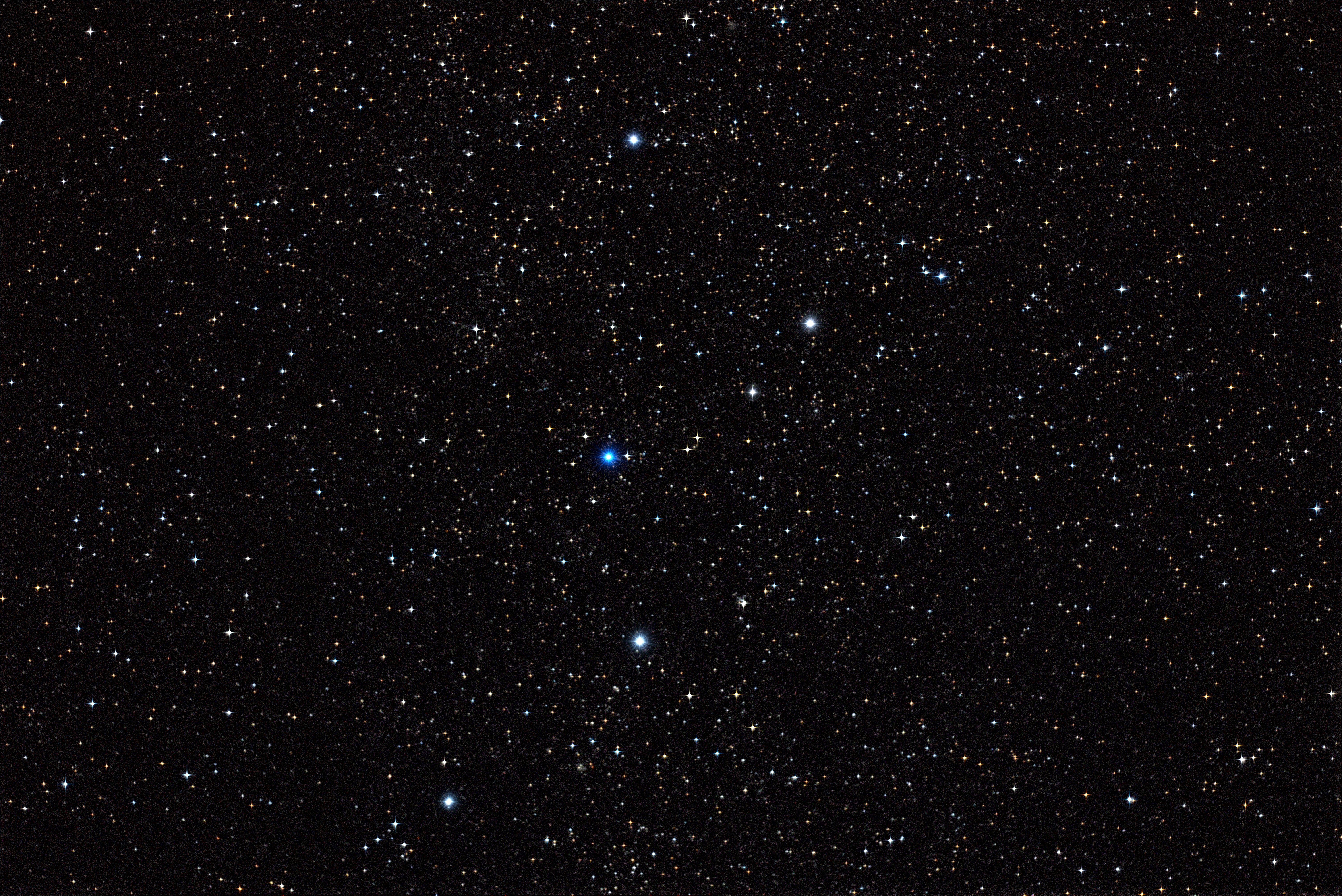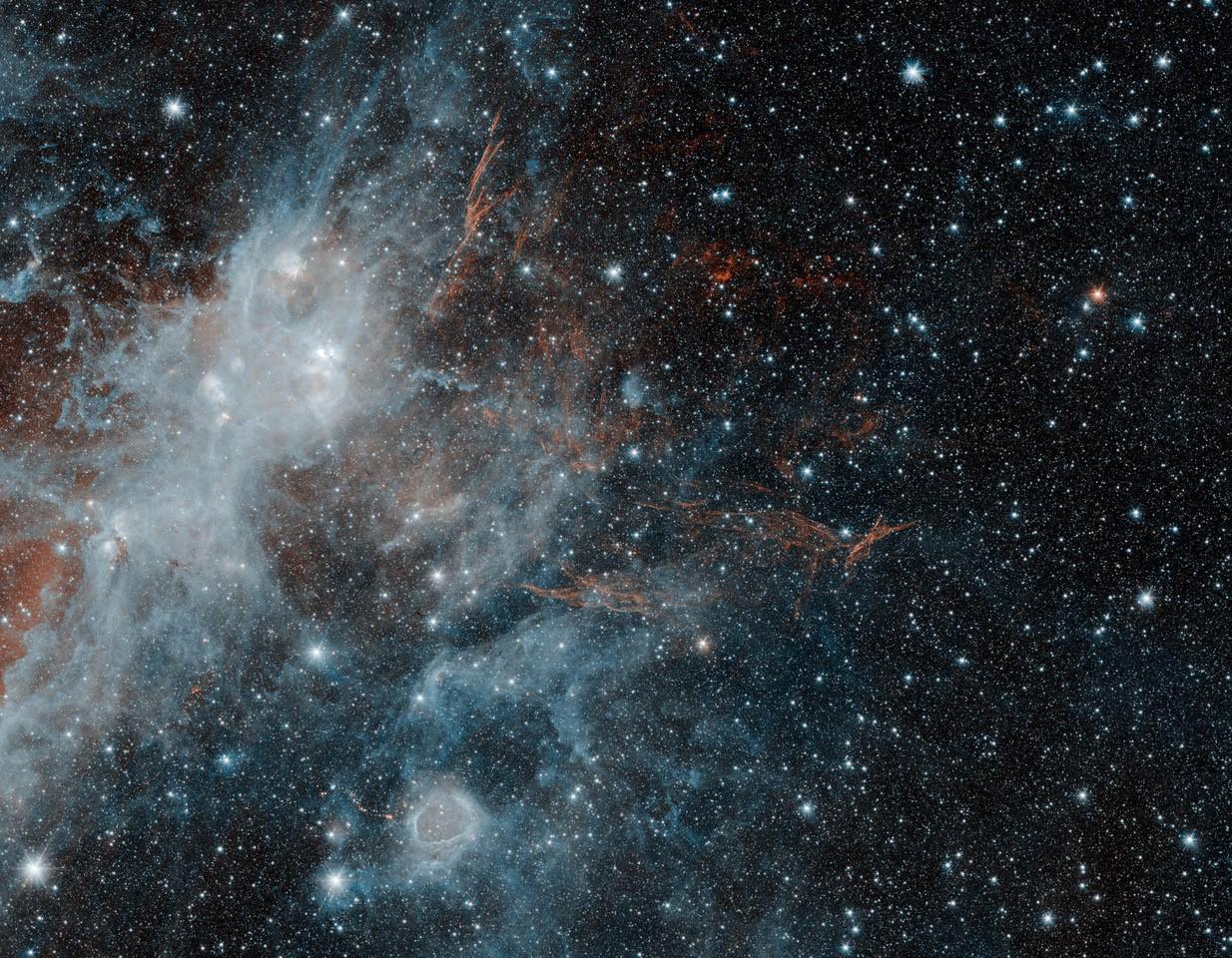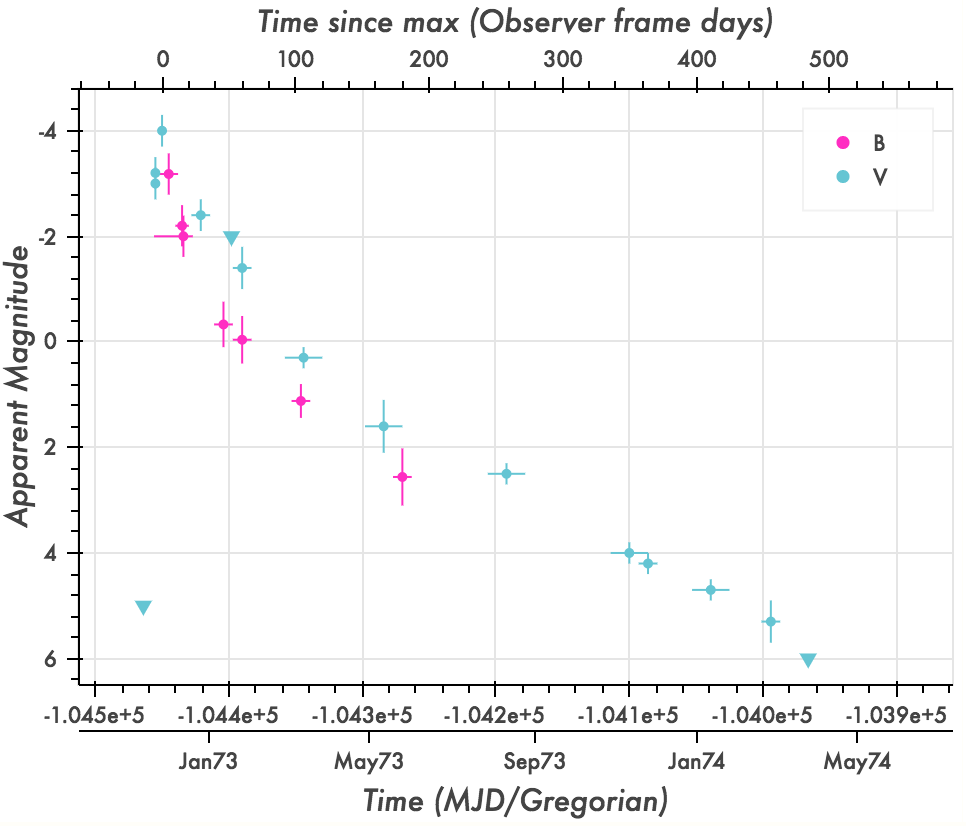|
Cassiopeia (constellation)
Cassiopeia () is a constellation and Asterism (astronomy), asterism in the northern sky named after the vain queen Cassiopeia (mother of Andromeda), Cassiopeia, mother of Andromeda (mythology), Andromeda, in Greek mythology, who boasted about her unrivaled beauty. Cassiopeia was one of the 48 constellations listed by the 2nd-century Greek astronomer Ptolemy, and it remains one of the 88 modern constellations today. It is easily recognizable due to its distinctive 'W' shape, formed by five bright stars. Cassiopeia is located in the northern sky and from latitudes above 34th parallel north, 34°N it is visible year-round. In the (sub)tropics it can be seen at its clearest from September to early November, and at low southern, tropical, latitudes of less than 25th parallel south, 25°S it can be seen, seasonally, low in the North. At magnitude 2.2, Alpha Cassiopeiae, or Schedar, is the brightest star in Cassiopeia. The constellation hosts some of the most luminous stars known, inclu ... [...More Info...] [...Related Items...] OR: [Wikipedia] [Google] [Baidu] |
Lexico
''Lexico'' was a dictionary website that provided a collection of English and Spanish dictionaries produced by Oxford University Press (OUP), the publishing house of the University of Oxford. While the dictionary content on ''Lexico'' came from OUP, this website was operated by Dictionary.com, whose eponymous website hosts dictionaries by other publishers such as Random House. The website was closed and redirected to Dictionary.com on 26 August 2022. Before the Lexico site was launched, the ''Oxford Dictionary of English'' and ''New Oxford American Dictionary'' were hosted by OUP's own website ''Oxford Dictionaries Online'' (''ODO''), later known as ''Oxford Living Dictionaries''. The dictionaries' definitions have also appeared in Google Dictionary, Google definition search and the Dictionary (software), Dictionary application on macOS, among others, licensed through the Oxford Dictionaries API. History In the 2000s, OUP allowed access to content of the ''Compact Oxford Englis ... [...More Info...] [...Related Items...] OR: [Wikipedia] [Google] [Baidu] |
Cassiopeia (mother Of Andromeda)
Cassiopeia (; Ancient Greek: Κασσιόπεια ''Kassiópeia,'' Modern Greek: ''Kassiópē'') or Cassiepeia (Κασσιέπεια ''Kassiépeia''), a figure in Greek mythology, was Queen of Aethiopia and wife of King Cepheus of Ethiopia. She was arrogant and vain, characteristics that led to her downfall. Family Her origins are obscure. Nonnus calls her a nymph, while according to Stephanus, she was called Iope, the daughter of Aeolus, from whom the town of Joppa (Jaffa) derived its name. Mythology Cassiopeia boasted that she (or her daughter Andromeda), was more beautiful than all the Nereids, the nymph-daughters of the sea god Nereus. This brought the wrath of Poseidon, ruling god of the sea, upon the kingdom of Aethiopia. Accounts differ as to whether Poseidon decided to flood the whole country or direct the sea monster Cetus to destroy it. In either case, trying to save their kingdom, Cepheus and Cassiopeia consulted a wise oracle, who told them that the only way ... [...More Info...] [...Related Items...] OR: [Wikipedia] [Google] [Baidu] |
Astronomical Radio Source
An astronomical radio source is an object in outer space that emits strong radio waves. Radio emission comes from a wide variety of sources. Such objects are among the most extreme and energetic physical processes in the universe. History In 1932, American physicist and radio engineer Karl Jansky detected radio waves coming from an unknown source in the center of the Milky Way galaxy. Jansky was studying the origins of radio frequency interference for Bell Laboratories. He found "...a steady hiss type static of unknown origin", which eventually he concluded had an extraterrestrial origin. This was the first time that radio waves were detected from outer space. The first radio sky survey was conducted by Grote Reber and was completed in 1941. In the 1970s, some stars in the Milky Way were found to be radio emitters, one of the strongest being the unique binary MWC 349. Sources: Solar System The Sun As the nearest star, the Sun is the brightest radiation source in most frequenc ... [...More Info...] [...Related Items...] OR: [Wikipedia] [Google] [Baidu] |
Supernova Remnant
A supernova remnant (SNR) is the structure resulting from the explosion of a star in a supernova. The supernova remnant is bounded by an expanding shock wave, and consists of ejected material expanding from the explosion, and the interstellar material it sweeps up and shocks along the way. There are two common routes to a supernova: either a massive star may run out of fuel, ceasing to generate fusion energy in its core, and collapsing inward under the force of its own gravity to form a neutron star or a black hole; or a white dwarf star may accrete material from a companion star until it reaches a critical mass and undergoes a thermonuclear explosion. In either case, the resulting supernova explosion expels much or all of the stellar material with velocities as much as 10% the speed of light (or approximately 30,000 km/s) and a strong shock wave forms ahead of the ejecta. That heats the upstream plasma up to temperatures well above millions of K. The shock continuou ... [...More Info...] [...Related Items...] OR: [Wikipedia] [Google] [Baidu] |
Cassiopeia A
Cassiopeia A (Cas A) () is a supernova remnant (SNR) in the constellation Cassiopeia and the brightest extrasolar radio source in the sky at frequencies above 1 GHz. The supernova occurred approximately away within the Milky Way; given the width of the Orion Arm, it lies in the next-nearest arm outwards, the Perseus Arm, about 30 degrees from the Galactic anticenter. The expanding cloud of material left over from the supernova now appears approximately across from Earth's perspective. It has been seen in wavelengths of visible light with amateur telescopes down to 234 mm (9.25 in) with filters. It is estimated that light from the supernova itself first reached Earth near the 1660s, although there are no definitively corresponding records from then. Cas A is circumpolar at and above mid-Northern latitudes which had extensive records and basic telescopes. Its likely omission in records is probably due to interstellar dust absorbing optical wavelen ... [...More Info...] [...Related Items...] OR: [Wikipedia] [Google] [Baidu] |
SN 1572
SN 1572 ('' Tycho's Star'', ''Tycho's Nova'', ''Tycho's Supernova''), or B Cassiopeiae (B Cas), was a supernova of Type Ia in the constellation Cassiopeia, one of eight supernovae visible to the naked eye in historical records. It appeared in early November 1572 and was independently discovered by many individuals. Its supernova remnant has been observed optically but was first detected at radio wavelengths. It is often known as 3C 10, a radio-source designation, although increasingly as Tycho's supernova remnant. Historic description The appearance of the Milky Way supernova of 1572 belongs among the most important observation events in the history of astronomy. The appearance of the " new star" helped to revise ancient models of the heavens and to speed on a revolution in astronomy that began with the realisation of the need to produce better astrometric star catalogues, and thus the need for more precise astronomical observing instruments. It also challenged the Aristot ... [...More Info...] [...Related Items...] OR: [Wikipedia] [Google] [Baidu] |
6 Cassiopeiae
6 Cassiopeiae (6 Cas) is a white hypergiant in the constellation Cassiopeia, and a small-amplitude variable star. At 5th magnitude, it is visible to the naked eye under good observing conditions. System 6 Cassiopeiae A is a white A2.5 type hypergiant. It is about 25 times as massive as the Sun and 200,000 times as luminous. The star is slightly and erratically variable, an Alpha Cygni variable. Not all sources consider 6 Cas to be a hypergiant. It is thought that the "+" in an early A3 Ia+ spectral classification referred to indications of additional spectral features from a possible companion rather than the more modern indication of a hypergiant luminosity class. However, later publications have given more conventional hypergiant spectral types such as B9Ia+ and A3Ia+. 6 Cas A has a number of close companions, most notably an 8th magnitude O class bright giant at only . Its spectral type is O9.75 and its absolute magnitude is −5.8. Both are considered to be ... [...More Info...] [...Related Items...] OR: [Wikipedia] [Google] [Baidu] |
V509 Cassiopeiae
V509 Cassiopeiae (V509 Cas or HR 8752) is one of two yellow hypergiant stars found in the constellation Cassiopeia, which also contains Rho Cassiopeiae. HR 8752 is around 12,400 light-years from Earth. It has an apparent magnitude that has varied from below +6 in historical times to a peak of +4.6 and now around +5.3 and is classified as a semiregular variable star of type SRd. It is undergoing strong mass loss as part of its rapid evolution and has recently passed partway through the yellow evolutionary void by ejecting around a solar mass of material in 20 years. A hot main sequence companion (B1V) was described in 1978 on the basis of a colour excess in the ultraviolet. Observations Brightness HR 8752 is a naked eye star but it has no Bayer or Flamsteed designation, and is not recorded in other catalogues before the 19th century. When first recorded in the Radcliffe Observatory catalogue in 1840 it was 6th magnitude, and it is assumed it had been 6th magnitude or f ... [...More Info...] [...Related Items...] OR: [Wikipedia] [Google] [Baidu] |
Rho Cassiopeiae
Rho Cassiopeiae (; ρ Cas, ρ Cassiopeiae) is a yellow hypergiant star in the constellation Cassiopeia. It is about distant, yet can still be seen by the naked eye as it is over 300,000 times brighter than the Sun. On average it has an absolute magnitude of −9.5, making it one of the most luminous stars known in visual wavelengths. Its diameter varies between about 300 and 800 times that of the Sun, or 1.4 to 3.7 times the size of Earth's orbit. Louisa Wells discovered that the star's brightness varies, and that discovery was published in 1901. Rho Cassiopeiae is a single star, and is categorized as a semiregular variable. As a yellow hypergiant, it is one of the rarest types of stars. Only a few dozen are known in the Milky Way, but it is not the only one in its constellation which also contains V509 Cassiopeiae. Naming ρ Cassiopeiae is the Bayer designation for this star, often Latinised to Rho Cassiopeiae. It was established in 1603 as part of the '' Uran ... [...More Info...] [...Related Items...] OR: [Wikipedia] [Google] [Baidu] |
25th Parallel South
Following are circles of latitude between the 20th parallel south and the 25th parallel south: 21st parallel south The 21st parallel south is a circle of latitude that is 21 degrees south of the Earth's equatorial plane. It crosses the Atlantic Ocean, Africa, the Indian Ocean, Australasia, the Pacific Ocean and South America. Around the world Starting at the Prime Meridian and heading eastwards, the parallel 21° south passes through: : 22nd parallel south The 22nd parallel south is a circle of latitude that is 22 degrees south of the Earth's equatorial plane. It crosses the Atlantic Ocean, Africa, the Indian Ocean, Australasia, the Pacific Ocean and South America. A section of the border between Namibia and Botswana, and two sections of the border between Bolivia and Argentina are defined by the parallel. Around the world Starting at the Prime Meridian and heading eastwards, the parallel 22° south passes through: : 23 parallel south The 23rd parallel south i ... [...More Info...] [...Related Items...] OR: [Wikipedia] [Google] [Baidu] |
34th Parallel North
Following are circles of latitude between the 30th parallel north and the 35th parallel north: 31st parallel north The 31st parallel north is a circle of latitude that is 31 degrees north of the Earth's equatorial plane. It crosses Africa, Asia, the Pacific Ocean, North America, and the Atlantic Ocean. At this latitude the sun is visible for 14 hours, 10 minutes during the summer solstice and 10 hours, 8 minutes during the winter solstice. Part of the border between Iran and Iraq is defined by the parallel. In the United States, it defines part of the border between the states of Mississippi and Louisiana, and most of the border between Alabama and Florida. Andrew Ellicott surveyed this parallel in 1797, which in Pinckney's Treaty two years before had been defined as the border between the United States and the Spanish territory of West Florida. Around the world Starting at the Prime Meridian and heading eastwards, the parallel 31° north passes through: : 32nd paralle ... [...More Info...] [...Related Items...] OR: [Wikipedia] [Google] [Baidu] |
Northern Sky
The northern celestial hemisphere, also called the Northern Sky, is the northern half of the celestial sphere; that is, it lies north of the celestial equator. This arbitrary sphere appears to rotate westward around a polar axis due to Earth's rotation. At any given time, the entire Northern Sky is visible from the geographic North Pole, while less of the hemisphere is visible the further south the observer is located. The southern counterpart is the southern celestial hemisphere. Astronomy In the context of astronomical discussions or writing about celestial cartography, the northern celestial hemisphere may be referred to as the Northern Hemisphere. For celestial mapping, astronomers may conceive the sky like the inside of a sphere divided into two halves by the celestial equator. The Northern Sky or Northern Hemisphere is therefore the half of the celestial sphere that is north of the celestial equator. Even if this geocentric model is the ideal projection of the terres ... [...More Info...] [...Related Items...] OR: [Wikipedia] [Google] [Baidu] |








